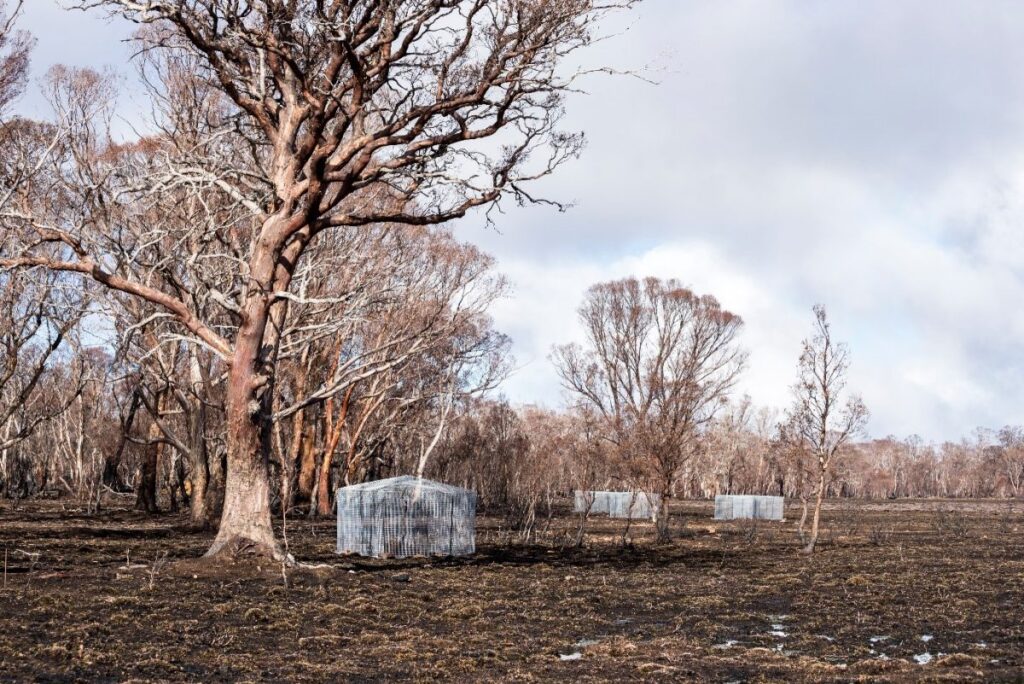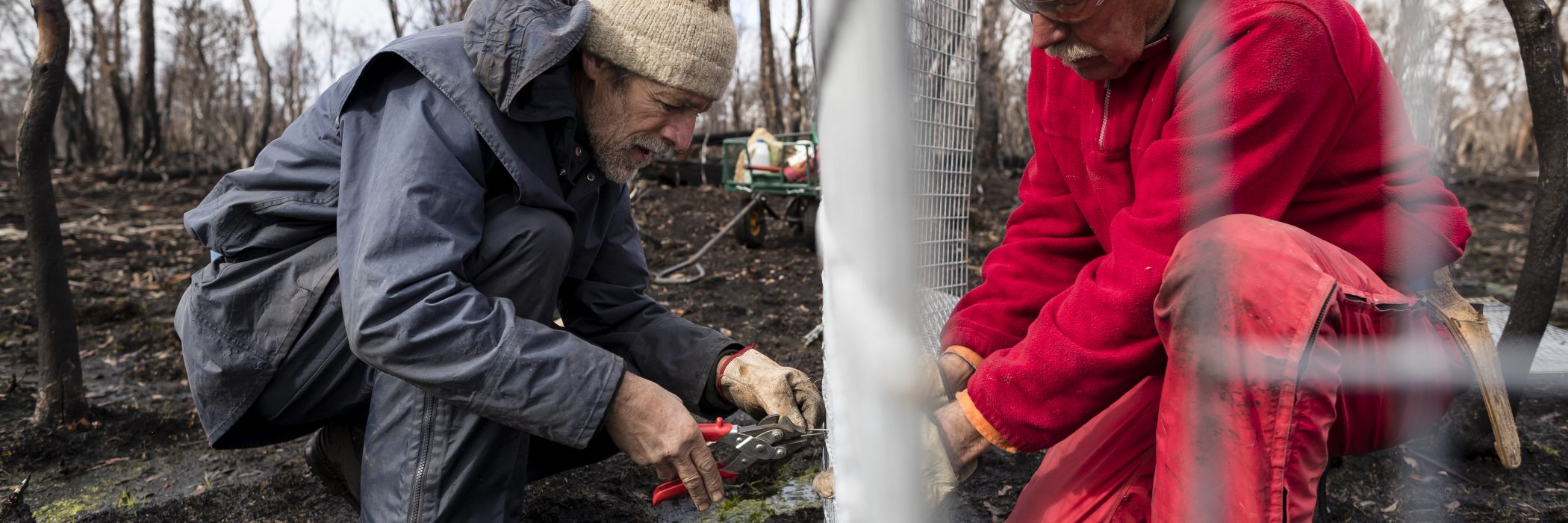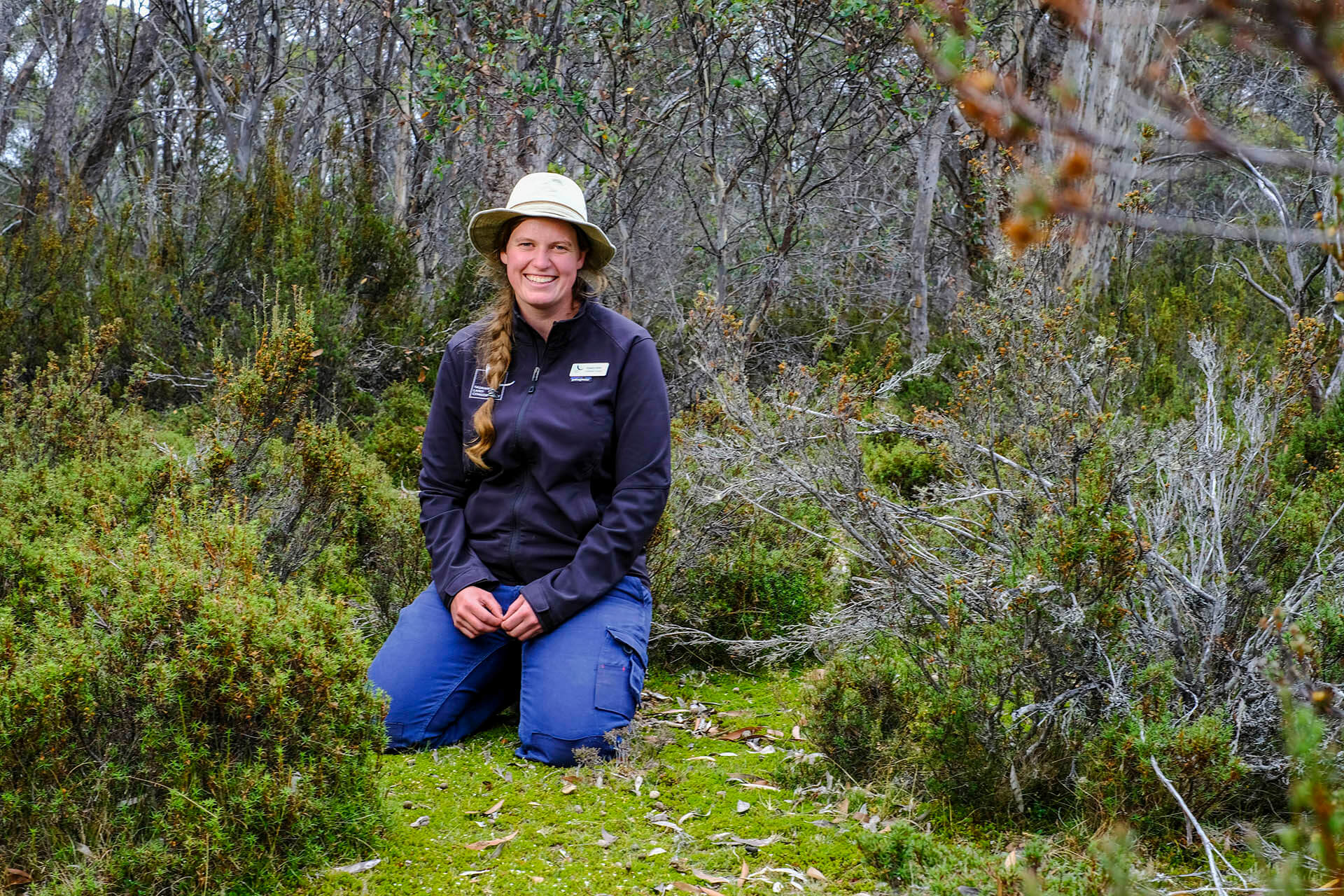From the Field: Cider Gum Recovery
The Cider Gum (Eucalyptus gunnii) is a true Tasmanian. Like the hardy Tasmanian primary school kids refusing to change from shorts to long pants in the middle of winter, this endemic eucalypt is specially adapted to living in cold and wet conditions. Its sap has a very high sugar content, and acts as a natural antifreeze which allows it to persist on the frosty and often waterlogged margins of highland marshes on the Central Plateau which are uninhabitable to less specialised species. This sap is also what gives the species its name: it was tapped and fermented into a cider-like drink by both the Tasmanian Aboriginal people and early European settlers.
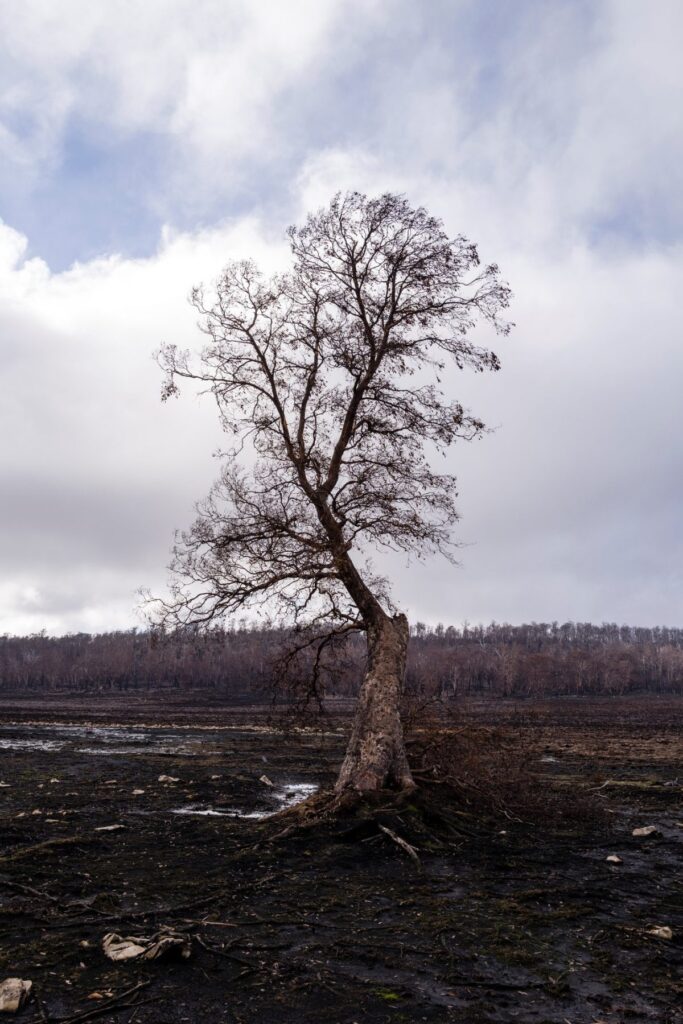
Unfortunately for the Cider Gum, its impressive and highly specialised adaptations leave it vulnerable to a changing climate. A preference for wet feet means it has a very low drought tolerance, and adaptations to cold and frosty conditions also leave it vulnerable to heat stress in a warming and drying climate. The sugary sap also makes it a delicious source of energy for insects and animals, and high levels of herbivory contribute to the dieback of stressed or damaged stands. The Miena cider gum subspecies (Eucalyptus gunnii subsp divaricata) is listed as endangered under state and federal legislation following widespread dieback across its range.
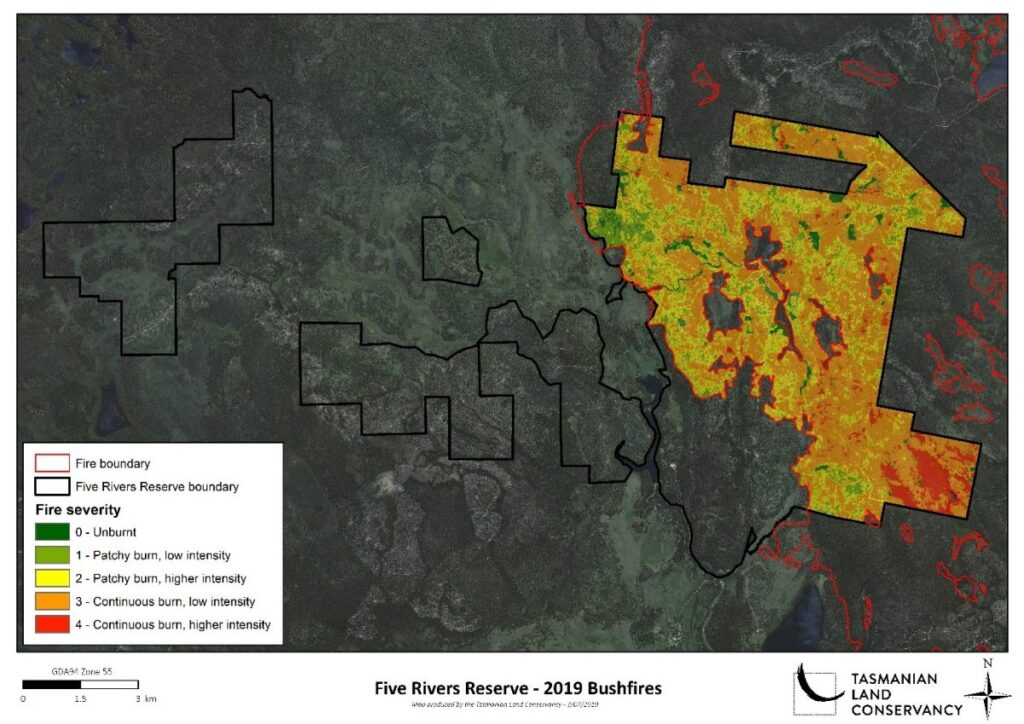
Approximately 5000ha of the TLC’s Five Rivers reserve was affected by the 2019 bushfires. Across much of the reserve, the fire was patchy and relatively low intensity, often not reaching the canopy and skirting round marshes and grasslands. Encouraging signs of regrowth and regeneration were already apparent during our post-fire surveys in April and May. In the south-eastern corner of the reserve near Bellevue Tier, however, the fire was much hotter and burnt right through the Top Marshes, which support fringing stands of the endangered Miena cider gum.

Our post-fire surveys showed that although many of the older, mature cider gums had been killed by the fire, many of the younger trees and saplings were starting to resprout. There were also intact seed capsules on some of the fallen and burnt mature trees, suggesting that new seedlings may be able to germinate in the nutrient-rich ash. Unfortunately, these surveys also indicated that any tasty young cider gum regeneration is being eaten faster than it can grow.
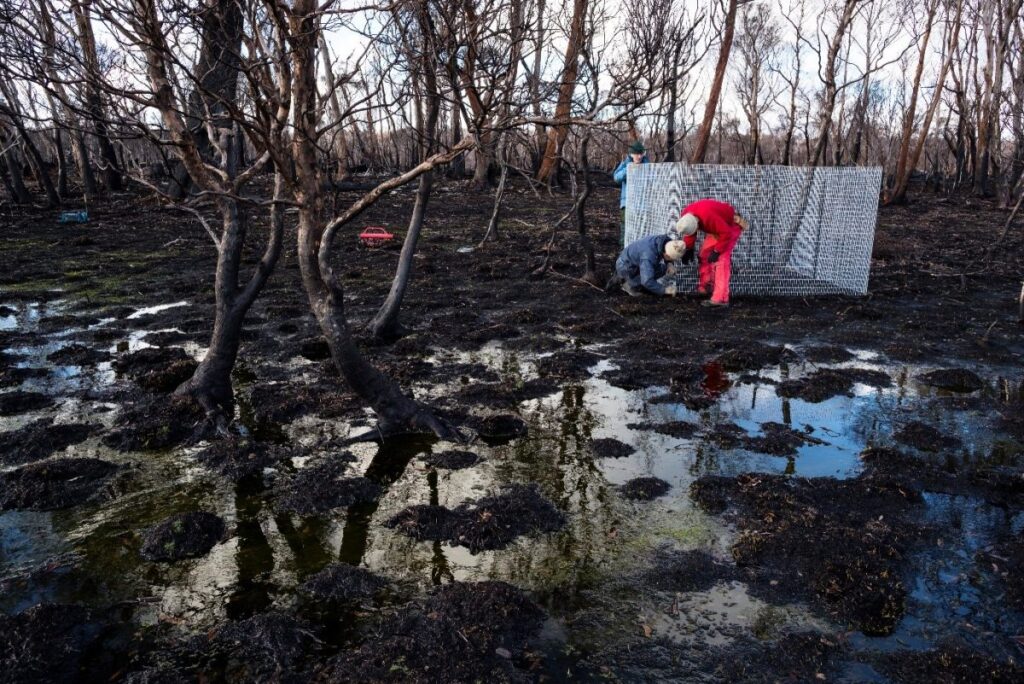
To give the cider gums the best chance of recovery, TLC staff and volunteers have been braving the wintery weather to cage some of the young regrowth. Despite flurries of snow, drizzle and occasionally Antarctic winds, approximately half of the 50 cages have already been installed and the rest will be completed in the coming weeks. These cages will allow the regrowth to get past the most vulnerable (and tasty!) young stages without constant browsing by herbivores.
